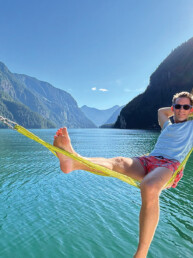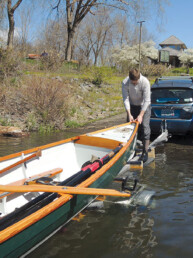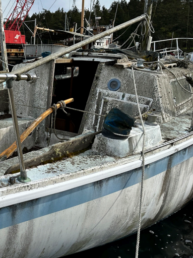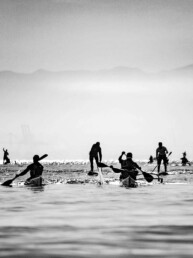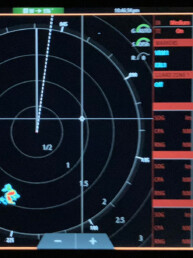Chris and Justin Wolfe share the story of their epic and podium-topping effort on the J/111 Raku in this year’s PNW Offshore Race from Ilwaco to Port Angeles.
Formerly known as the Oregon Offshore Race, the new Pacific Northwest Offshore was a go for 2021 with a new pre-start location in Ilwaco, and with the U.S./Canada border still closed, there was a new finish location in Port Angeles. Historically a feeder race for Swiftsure in May, this year COVID threw a wrinkle in the lead up, canceling Swiftsure; and the CYC Portland race organizers wisely elected to push the start to June in hopes that the pandemic would wane and allow the race to go off. That worked out exceptionally well, with 24 boats and their crews enjoying the lost art of pre- and post-race mingling and proper dock parties.
After so many race cancellations over the last year, particularly the overnighters, it was clear the local sailing community was eager for some distance racing. At least seven boats made the 200-plus nautical mile delivery from the Salish Sea down to the start, just to turn around and race back “home”, and I didn’t hear anyone complaining about the sunshine, warm air, and longer days that June brought to the race.
We all know the Washington coast can be a tough place. Northwesterlies are the norm, and a robust NW swell is all but a given. So it was a beautiful moment when two days out from the start ALL the weather models agreed this year was going to be a solid southerly all the way up the coast to Cape Flattery, and with mild conditions leading up to the race, the NW swell would do its best to lay down, too.
Onboard Raku — a J/111 that Chris and I doublehanded — we had to pinch ourselves. Could we really get a spinnaker run for 132 miles all the way to the Strait of Juan de Fuca? I must have checked the various forecast models 50 times during the two days we were hanging out at the hospitality house in Ilwaco, and the message was unwavering — SW-SE 10-20 knots. No exceptions. Obviously, the little iconic Dog Patch 26, Moonshine, under the new ownership of Marc Andrea-Kilmaschewski and with navigational help from David Rogers, were licking their chops and breathing a sigh of relief — the mini-sled has proved itself many a time racing to Hawaii, and would be perfectly happy zooming downwind instead of bashing uphill for 132 miles.

Well, let’s do this then! Kite up as the gun went off, and send it all day and night long. Holy cow, it was the real deal. As is commonly the case, the scratch boat — Wylie 70 Rage — stretched its long waterline legs and disappeared over the horizon. Raku followed, a bit lonesome. We were too far from Rage to have a battle and too far in front of the majority of the fleet that got to swap jibes all the way up the coast. For those following the race on the Yellowbrick tracker, the boats were often so close together it was difficult to tell how many boats were in one place until you zoomed way in.
The conditions really couldn’t have been better. I’m not sure we ever saw less than 10 knots of breeze and only the tail end of the fleet saw over 20 knots. To be fair, the crew on Jubilee, a C&C 34, saw over 50 knots from behind as the low providing our glorious southerlies finally pushed towards the coast.
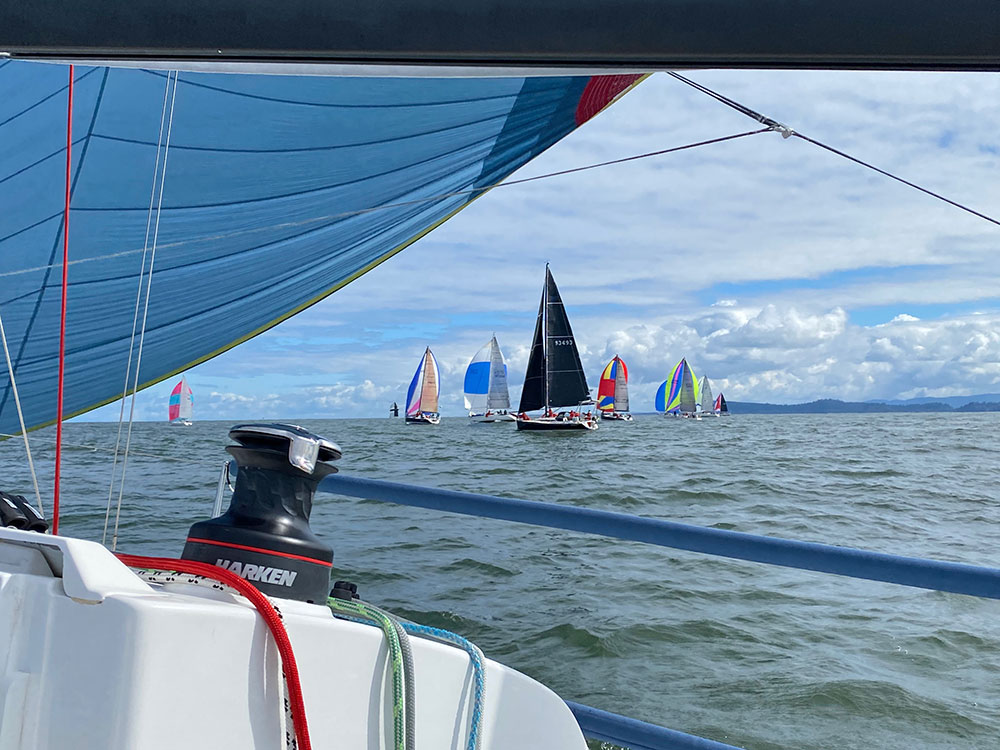
That was the first leg of the race. The second leg, 60 miles down the Strait of Juan de Fuca, was a whole ‘nother ball of string. Rage rounded Cape Flattery, Raku rounded a few hours later, and then the fleet rounded a few hours later. Rage started going backwards, swept west by the strong ebb and no clear path of breeze and Raku started going backwards, too. The fleet got compressed, with several boats including Time Bandit (J/120), Velocity (J/42), and Gone with the Wind (C&C 99) hugging the Washington coast, making solid progress in the current relief. Others, like The Boss (J/35), Free Bowl of Soup (J/105), and Dash (J/99) struck out towards the middle of the Straits, where Rage and Raku languished, making the slowest progress towards the finish. The hope was to find more breeze in the middle to overcome the, at times, 2 knot ebb. Remember, the border was still closed, which meant the Straits were suddenly half as wide. On Raku, I can’t count how many times we saw breeze “over there”, on the other side of the border, where one must not go.
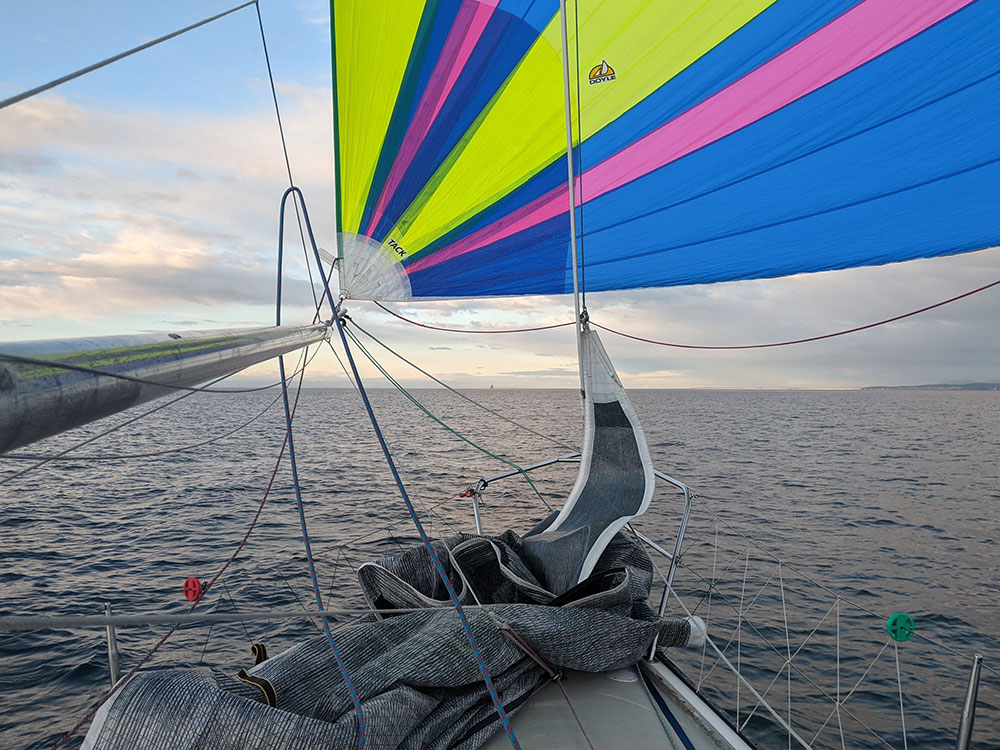
As the tide switched, progress east improved and, it appears the middle of the Straits paid well for The Boss, Free Bowl of Soup, and Dash, as they kept pace. At times, these boats even got ahead of the faster Time Bandit coming out from the shoreline to the stronger flood in the middle.
Rage coasted across the line at a very civil 7:30 p.m., 33.5 hours after the start, to take line honors. Raku and The Boss closed in on the Ediz Hook turn point outside of Port Angeles right at sunset, just as the next ebb started to beat the boats back from the finish. Five miles out, The Boss was only 1.5 miles behind Raku and looking solid for the overall. Raku owed The Boss 87 minutes, and well, it couldn’t possibly take 87 minutes to go 1.5nm could it? Oh, my friend, have you ever been to a sailboat race? The Boss ghosted across the line in the dark after a brilliant sail down the Straits and 110 minutes after Raku. As it happened, Raku wound up first in the doublehanded division, and first overall. The Boss landed in second overall and first in PHRF Class A2. Meanwhile, Dash, in their first offshore race, having only just launched last fall, filled out the podium in third overall. Should I mention that was a clean sweep by the northern contingent that delivered down from Salish Sea for the race?
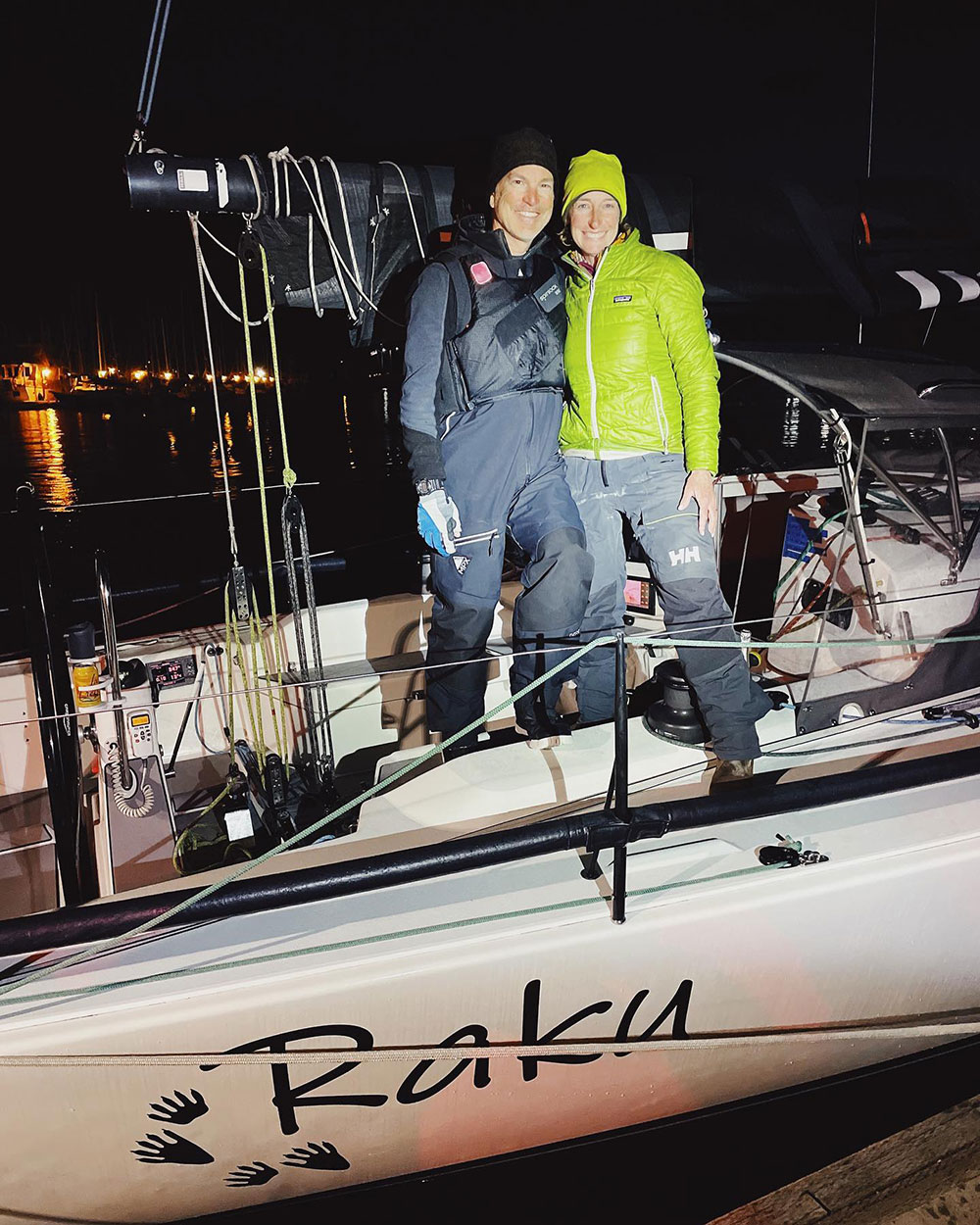
Four of the finishers (Moonshine, Dash, The Boss, and Raku) are among the 20-something boats from the PNW that are signed up for the 2022 Pacific Cup, and were using the PNW Offshore as their 150-nautical-mile qualifier. Check that box!
Whales! There were multiple reports of seeing “a dozen” or “20-30” humpback whales concentrated in a pod, with at least three boats noting very close encounters as we passed north through what seemed to be a south-moving group. This is not a scientific study, but there seemed to be two clues we were amongst the whales. First, there was far more bird activity; and second, you could smell them. Yep, those whale spouts aren’t exactly minty fresh.
It was an exceptional race! Here’s to the return of more good sailing times and more offshore sailing opportunities in the Pacific Northwest!


